
FOR TEACHERS ONLY
The University of the State of New York
REGENTS HIGH SCHOOL EXAMINATION
PS–ES PHYSICAL SETTING/EARTH SCIENCE
Tuesday, August 16, 2005 — 12:30 to 3:30 p.m., only
SCORING KEY AND RATING GUIDE
Directions to the Teacher:
Refer to the directions on page 3 before rating student papers.
Updated information regarding the rating of this examination may be posted on the New York State
Education Department’s web site during the rating period. Visit the site http://www.emsc.nysed.gov/osa/
and select the link “Latest Information” for any recently posted information regarding this examination.
This site should be checked before the rating process for this examination begins and at least one more
time before the final scores for the examination are recorded.
Part A and Part B–1
Allow 1 credit for each correct response
Part A
Part B–1
1 . . . . . 3 . . . . .
13 . . . . . 3 . . . . .
25 . . . . . 1 . . . . .
36 . . . . . 1 . . . . . 44 . . . . . 2 . . . . .
2 . . . . . 4 . . . . .
14 . . . . . 4 . . . . .
26 . . . . . 2 . . . . .
37 . . . . . 1 . . . . . 45 . . . . . 4 . . . . .
3 . . . . . 3 . . . . .
15 . . . . . 2 . . . . .
27 . . . . . 2 . . . . .
38 . . . . . 2 . . . . . 46 . . . . . 2 . . . . .
4 . . . . . 4 . . . . ..
16 . . . . . 4 . . . . .
28 . . . . . 1 . . . . .
39 . . . . . 2 . . . . . 47 . . . . . 3 . . . . .
5 . . . . . 1 . . . . .
17 . . . . . 3 . . . . .
29 . . . . . 2 . . . . .
40 . . . . . 3 . . . . . 48 . . . . . 4 . . . . .
6 . . . . . 4 . . . . .
18 . . . . . 2 . . . . .
30 . . . . . 3 . . . . .
41 . . . . . 4 . . . . . 49 . . . . . 1 . . . . .
7 . . . . . 4 . . . . .
19 . . . . . 3 . . . . .
31 . . . . . 4 . . . . .
42 . . . . . 2 . . . . . 50 . . . . . 3 . . . . .
8 . . . . . 2 . . . . .
20 . . . . . 3 . . . . .
32 . . . . . 3 . . . . .
43 . . . . . 4 . . . . .
9 . . . . . 1 . . . . .
21 . . . . . 3 . . . . .
33 . . . . . 4 . . . . .
10 . . . . . 1 . . . . .
22 . . . . . 4 . . . . .
34 . . . . . 1 . . . . .
11 . . . . . 2 . . . . .
23 . . . . . 4 . . . . .
35 . . . . . 3 . . . . .
12 . . . . . 2 . . . . .
24 . . . . . 3 . . . . .
[1]
[OVER]

[2]

P HYSICAL S ETTING /E ARTH S CIENCE – continued
Directions to the Teacher
Follow the procedures below for scoring student answer papers for the Physical Setting/Earth
Science examination. Additional information about scoring is provided in the publication Information
Booklet for Scoring Regents Examinations in the Sciences .
Use only red ink or red pencil in rating Regents papers. Do not correct the student’s work by
making insertions or changes of any kind.
On the detachable answer sheet for Part A and Part B–1, indicate by means of a checkmark each
incorrect or omitted answer. In the box provided at the end of each part, record the number of
questions the student answered correctly for that part.
At least two science teachers must participate in the scoring of each student’s responses to the
Part B–2 and Part C open-ended questions. Each of these teachers should be responsible for scoring
a selected number of the open-ended questions on each answer paper. No one teacher is to score all
the open-ended questions on a student’s answer paper.
Student’s responses must be scored strictly according to the Scoring Key and Rating Guide. For
open-ended questions, credit may be allowed for responses other than those given in the rating guide
if the response is a scientifically accurate answer to the question and demonstrates adequate
knowledge as indicated by the examples in the rating guide. In the student’s answer booklet, record
the number of credits earned for each answer in the box printed to the right of the answer lines or
spaces for that question.
Fractional credit is not allowed. Only whole-number credit may be given to a response. Units
need not be given when the wording of the questions allows such omissions.
Raters should enter the scores earned for Part A, Part B–1, Part B–2, and Part C on the
appropriate lines in the box printed on the answer booklet and then should add these four scores and
enter the total in the box labeled “Total Written Test Score.” The student’s score for the Earth
Science Performance Test should be entered in the space provided. Then, the student’s raw scores on
the performance test and written test should be converted to a scaled score by using the conversion
chart that will be posted on the Department’s web site http://www.emsc.nysed.gov/osa/ on Tuesday,
August 16, 2005. The student’s scaled score should be entered in the labeled box on the student’s
answer booklet. The scaled score is the student’s final examination score.
All student answer papers that receive a scaled score of 60 through 64 must be scored a second
time. For the second scoring, a different committee of teachers may score the student’s paper or the
original committee may score the paper, except that no teacher may score the same open-ended
questions that he/she scored in the first rating of the paper. The school principal is responsible for
assuring that the student’s final examination score is based on a fair, accurate, and reliable scoring of
the student’s answer paper.
Because scaled scores corresponding to raw scores in the conversion chart may change from one
examination to another, it is crucial that for each administration, the conversion chart provided in the
scoring key for that administration be used to determine the student’s final score. The chart in this
scoring key is usable only for this administration of the examination.
[3]
[OVER]

P HYSICAL S ETTING /E ARTH S CIENCE – continued
Part B–2
Allow a total of 15 credits for this part. The student must answer all questions in this part.
51 [1] Allow 1 credit. Acceptable responses include, but are not limited to:
— The higher the altitude of the top of the cloud, the greater the probability that hail
will be produced.
— direct relationship
52 [1] Allow 1 credit for stratosphere .
53 [1] Allow 1 credit for one day per year.
54 [2] Allow a maximum of 2 credits, allocated as follows:
proper format.
the proper format.
A 2-credit response is shown below:
Station Model
900
1
4
Note: Feathers may be placed on either side of the staff.
Do not allow credit for numbers with units.
55 [1] Allow 1 credit. Acceptable responses include, but are not limited to:
— Seek indoor shelter.
— If indoors, stay away from windows.
[4]

P HYSICAL S ETTING /E ARTH S CIENCE – continued
56
[1] Allow 1 credit if the center of the X falls within the circle shown on the time line below.
Geologic Time Line (millions of years ago)
a
b
c
d
e
f
g
X
540
510
480
450
420
390
360
330
300
270
57 [1] Allow 1 credit for Cambrian Period .
58 [1]
Allow 1 credit for Appalachian Orogeny or Alleghanian Orogeny.
59 [1] Allow 1 credit for f or g .
60 [1] Allow 1 credit. Acceptable responses include, but are not limited to:
— The landscape has a high relief.
— There is a large difference in elevation between the top and bottom rocks in the
cross section.
— steep slopes
— high elevation
61 [1] Allow 1 credit for Newark Lowlands .
[5]
[OVER]

P HYSICAL S ETTING /E ARTH S CIENCE – continued
62 [1] Allow 1 credit for arrows that exhibit clockwise convective circulation.
Example of a 1-credit response:
63 [1] Allow 1 credit. Acceptable responses include, but are not limited to:
— The arrival time of the P -wave at station A is later than the arrival time of the
P -wave at station B .
— The arrival time difference between the P -wave and S -wave is greater at station A .
— The amplitudes of the P -wave and S -wave tracings are greater on the seismogram
at station B .
64 [1] Allow 1 credit for 15 minutes 50 seconds (±10 seconds).
[6]
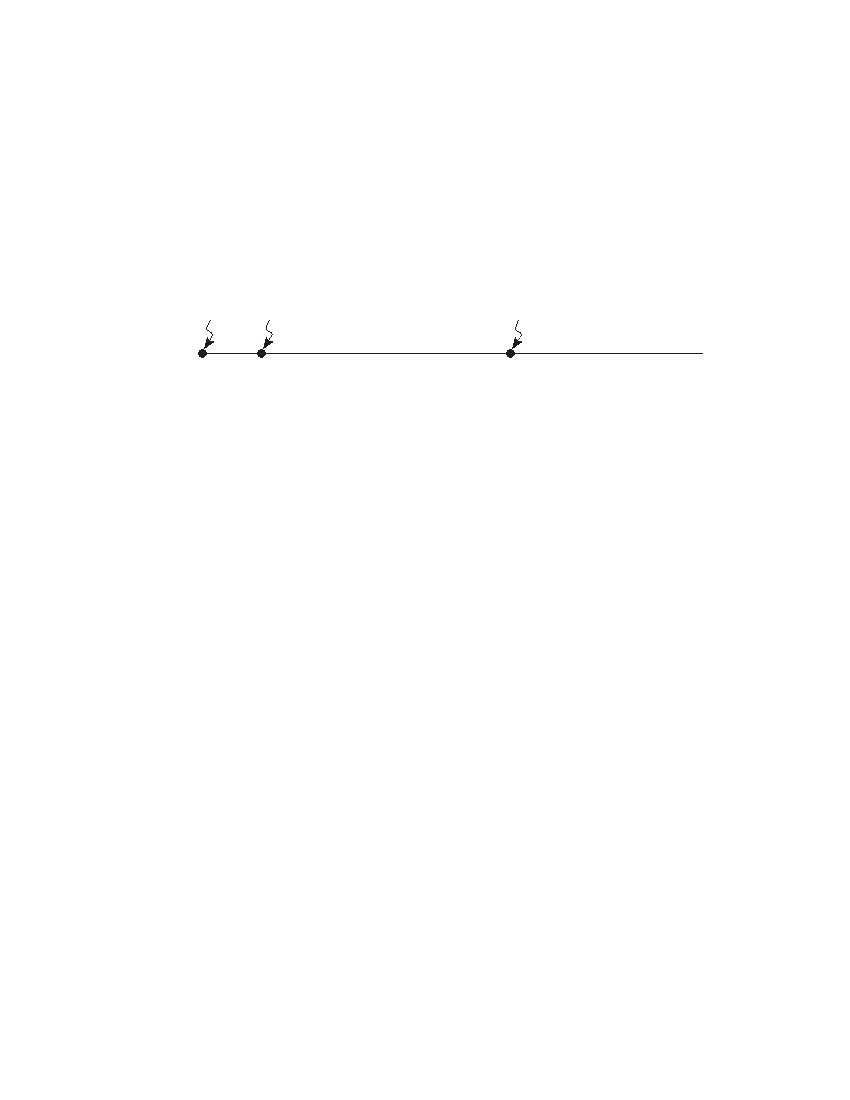
P HYSICAL S ETTING /E ARTH S CIENCE – continued
Part C
Allow a total of 20 credits for this part. The student must answer all questions in this part.
65 [1] Allow 1 credit if the center of the dot for Jupiter is 7.8 ( ± 0.4) cm from the center of the
Sun and the dot is labeled.
A 1-credit response is shown below:
Sun
Earth
Jupiter
1 cm = 100,000,000 km
Allow credit if a symbol other than a dot is used to correctly locate and label the position
of Jupiter.
66 [1] Allow 1 credit. Acceptable responses include, but are not limited to:
— Clockwise spiral snail shells are found in greater numbers.
— more clockwise fossil shells than counterclockwise
67 [1] Allow 1 credit. Acceptable responses include, but are not limited to:
— New York State experienced a warmer climate when it was located closer to the
Equator.
— The North American Plate has drifted northward from the equator region over
time.
— New York State used to be in the tropics.
[7]
[OVER]
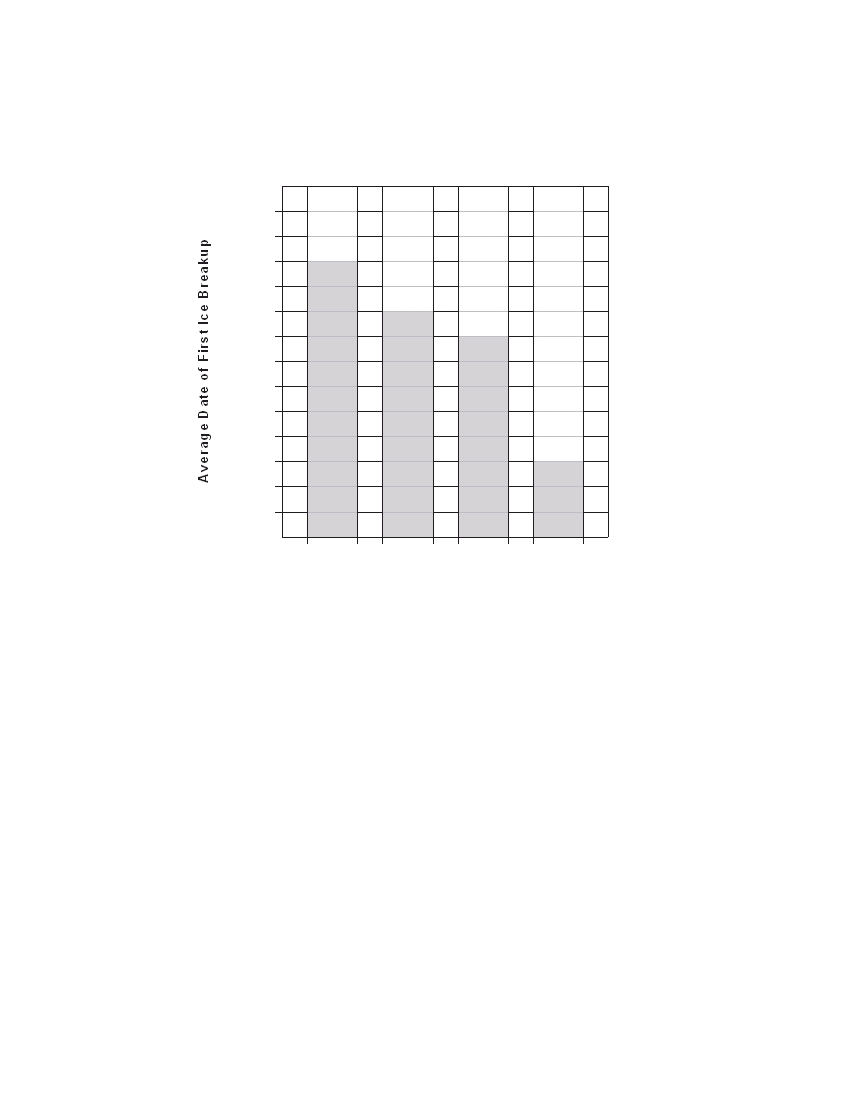
P HYSICAL S ETTING /E ARTH S CIENCE – continued
68 [1] Allow 1 credit if all four bars are correctly drawn.
A 1-credit response is shown below:
May 9
May 8
May 7
May 6
May 5
May 4
May 3
May 2
May 1
April 30
April 29
April 28
April 27
1960–
1970–
1980–
1990–
1969
1979
1989
1999
Decade
Note: Do not allow credit if the student constructs a line graph.
69 [1] Allow 1 credit. Acceptable responses include, but are not limited to:
— The climate appears to have warmed.
— Average yearly temperature increased.
Allow credit for a response that is consistent with the student’s graph in question 68.
70 [1] Allow 1 credit. Acceptable responses include, but are not limited to:
— They are at different latitudes.
— Nenana is located farther from the equator.
— The Sun’s apparent daily path is longer in Nenana on May 5th.
— The tilt of Earth’s axis causes a longer period of daylight in Nenana.
[8]
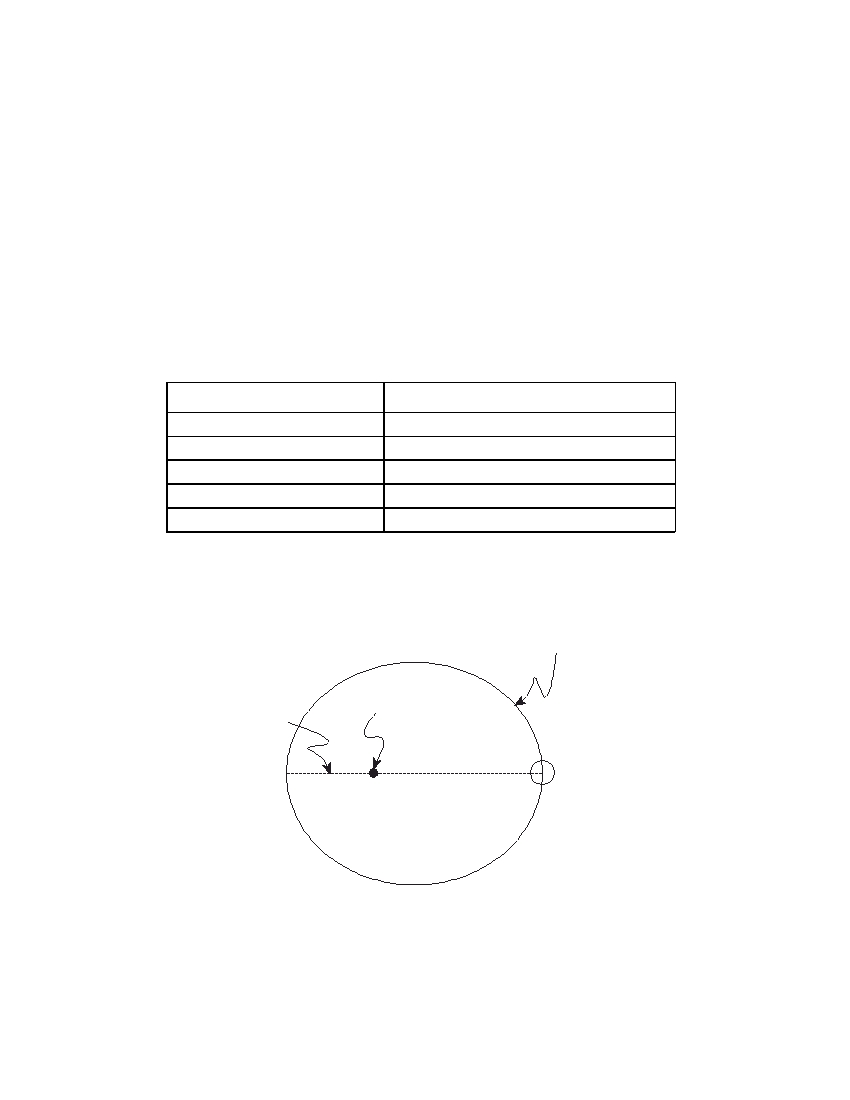
P HYSICAL S ETTING /E ARTH S CIENCE – continued
71 [2]
Allow a maximum of 2 credits, allocated as follows:
characteristic surface feature formed by each of the three agents of erosion.
characteristic surface feature formed by each of the two agents of erosion.
or
Allow 1 credit for correctly listing three agents of erosion even if the surface feature is
incorrectly identified.
Acceptable responses include, but are not limited to:
Agent of Erosion
Surface Feature Formed
Waves
beach, sandbars, barrier islands
Wind
loss of topsoil, dunes
Glacier
U-shaped valley, moraines, drumlins
Running water (streams)
V-shaped valley, deltas, meanders
Mass movement
landslides, slumps
72 [1] Allow 1 credit if the center of the circle is within the circle shown.
Asteroid’s orbit
Major
Sun
axis
(Not drawn to scale)
[9]
[OVER]
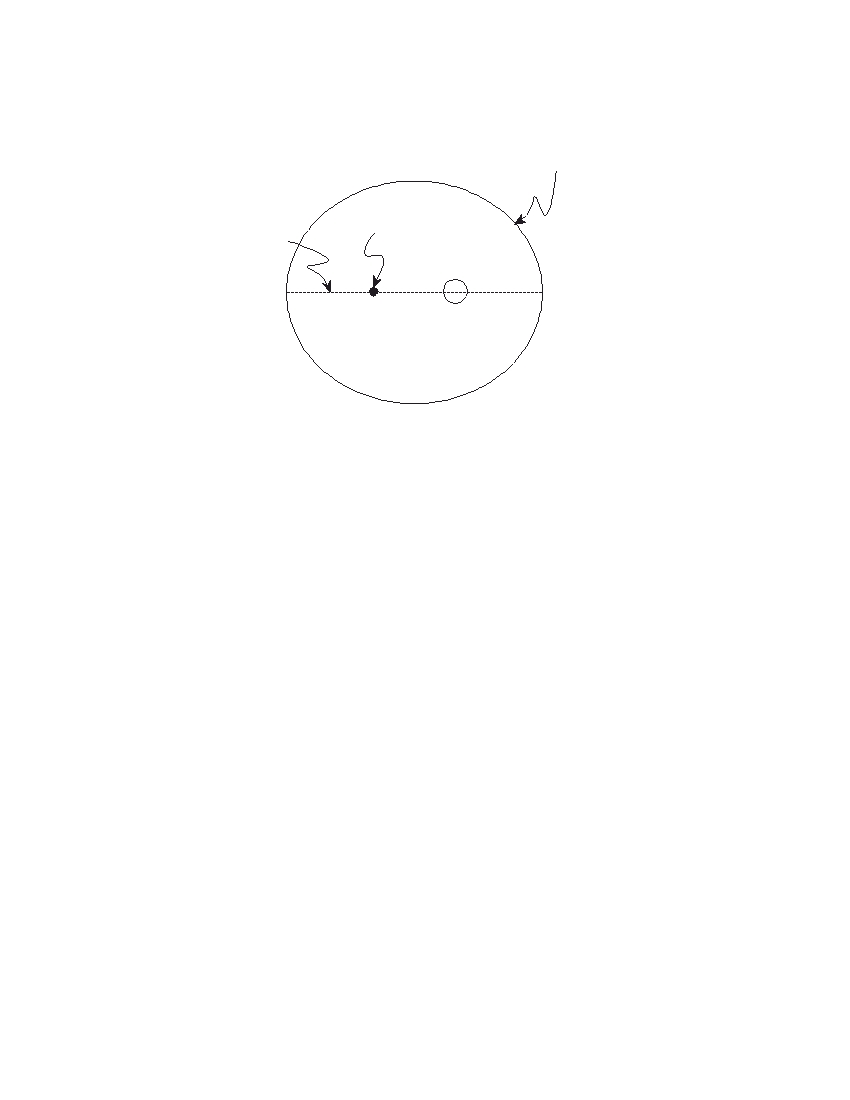
P HYSICAL S ETTING /E ARTH S CIENCE – continued
73 [1] Allow 1 credit if the center of the X is within the circle shown.
Asteroid’s orbit
Major
Sun
axis
X
(Not drawn to scale)
Note: Allow credit if a symbol other than X is used.
74 [2] Allow a maximum of 2 credits, allocated as follows:
— inches/mile
— in/mi
75 [1] Allow 1 credit. Acceptable responses include, but are not limited to:
— When Lake Erie is covered with ice, the air moving over it will pick up less
moisture.
— Less evaporation will take place.
— When Lake Erie is covered with ice, the air is heated less.
[10]
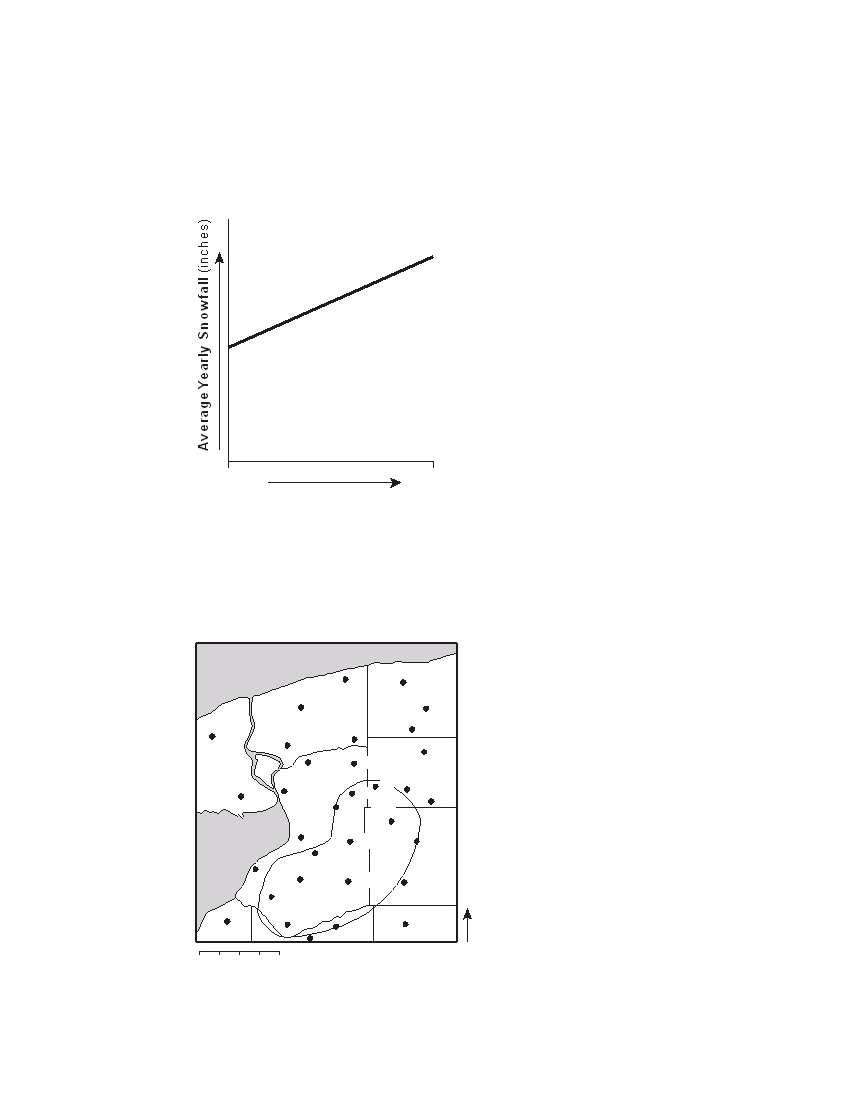
P HYSICAL S ETTING /E ARTH S CIENCE – continued
76 [1] Allow 1 credit if the line graph shows that southern Erie County has more snowfall than
northern Erie County.
Example of a 1-credit response:
Average Yearly Snowfall
for theThree Winters
Northern
Southern
Erie County
Erie County
77 [1] Allow 1 credit for a correctly drawn 120-inch snowfall isoline.
Example of a 1-credit response:
1984–1985 Winter Season
Lake Ontario
Lake Ontario
81
78
75
80
93
72
80
90
100
Ontario
95
110
100
121 119
80
122
105
120
128
102
150
120
Lake Erie
Lake Erie
130
118
160
160
115
130
N
110
140
118
120
100
0
5 10 15 20 miles
Note: If additional isolines are drawn, all isolines must be correct to receive credit.
[11]
[OVER]

P HYSICAL S ETTING /E ARTH S CIENCE – concluded
78 [1] Allow 1 credit. Acceptable responses include, but are not limited to:
— 5,700 years
— 5.7 × 10 3 years
79 [1] Allow 1 credit. Acceptable responses include, but are not limited to:
— U has a longer half-life.
238
— U can be used to date older geologic events.
238
— C is used to date organic remains while U is not.
14
238
80 [1] Allow 1 credit. Acceptable responses include, but are not limited to:
— crater
— impact crater
— large hole
81 [1] Allow 1 credit. Acceptable responses include, but are not limited to:
— deposition of sediment
— erosion
— subduction
— volcanic lava flow
— weathering
82 [1] Allow 1 credit. Acceptable responses include, but are not limited to:
— Dust that was thrown into Earth’s atmosphere caused a change in Earth’s
climate.
— The impact caused fires that killed plants and animals.
— Dust from the impact blocked sunlight that cooled Earth and caused many green
plants to die.
[12]

The Chart for Determining the Final Examination Score for the August 2005 Regents
Examination in Earth Science will be posted on the Department’s web site
http://www.emsc.nysed.gov/osa on Tuesday, August 16, 2005. Conversion charts
provided for previous administrations of the Regents Examination in Earth Science
must NOT be used to determine students’ final scores for this administration.
[13]
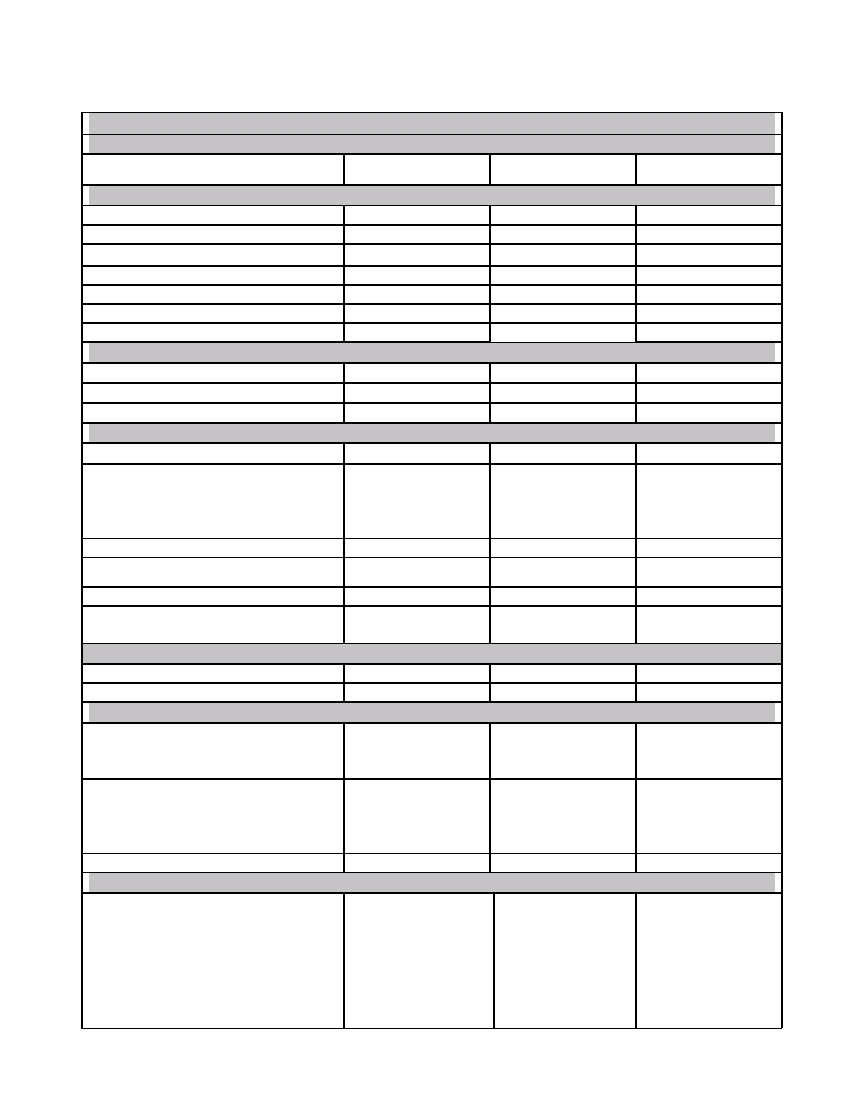
Map to Core Curriculum
August 2005 Physical Setting/Earth Science
Question Numbers
Key Ideas/Performance Indicators
Part A
Part B
Part C
S TANDARD 1
Math Key Idea 1
68,70,74
Math Key Idea 2
22
48,51,52,56,60
Math Key Idea 3
65,72
Science Inquiry Key Idea 1
Science Inquiry Key Idea 2
Science Inquiry Key Idea 3
14,26,32,33
37,54,61,63
66
Engineering Design Key Idea 1
S TANDARD 2
Key Idea 1
Key Idea 2
Key Idea 3
S TANDARD 6
Key Idea 1
69,76,77,81,82
Key Idea 2
7,10,11,13,15,16,
36,37,38,39,40,
66,68,71,78,79
17,18,24,26
41,42,43,44,45,
46,47,48,49,50,
53,54,60,62,63
Key Idea 3
44,56,57,58,59
65
Key Idea 4
Key Idea 5
64
72,73,75,78,79
Key Idea 6
S TANDARD 7
Key Idea 1
Key Idea 2
55
S TANDARD 4
Key Idea 1
1,2,3,4,5,6,7,8,9,
36,37,38,39,41,
65,66,67,72,73,
10,11,12,13,14,
50,56,57,58,59
76,78,79,80,82
15,16,18
Key Idea 2
17,19,20,21,22,
40,42,43,44,45,
68,69,70,71,74,
23,24,25,26,27,
46,47,48,49,50,
75,77,81
28,29,30,31,34
51,52,53,54,55,
60,61,62,63,64
Key Idea 3
32,33,35
81
R EFERENCE T ABLES
ESRT 2001 Edition
8,12,14,20,21,22,
47,52,53,54,56,
65,67,68,72,73
23,25,27,29,32,
57,58,59,61,63
33,34,35
[14]